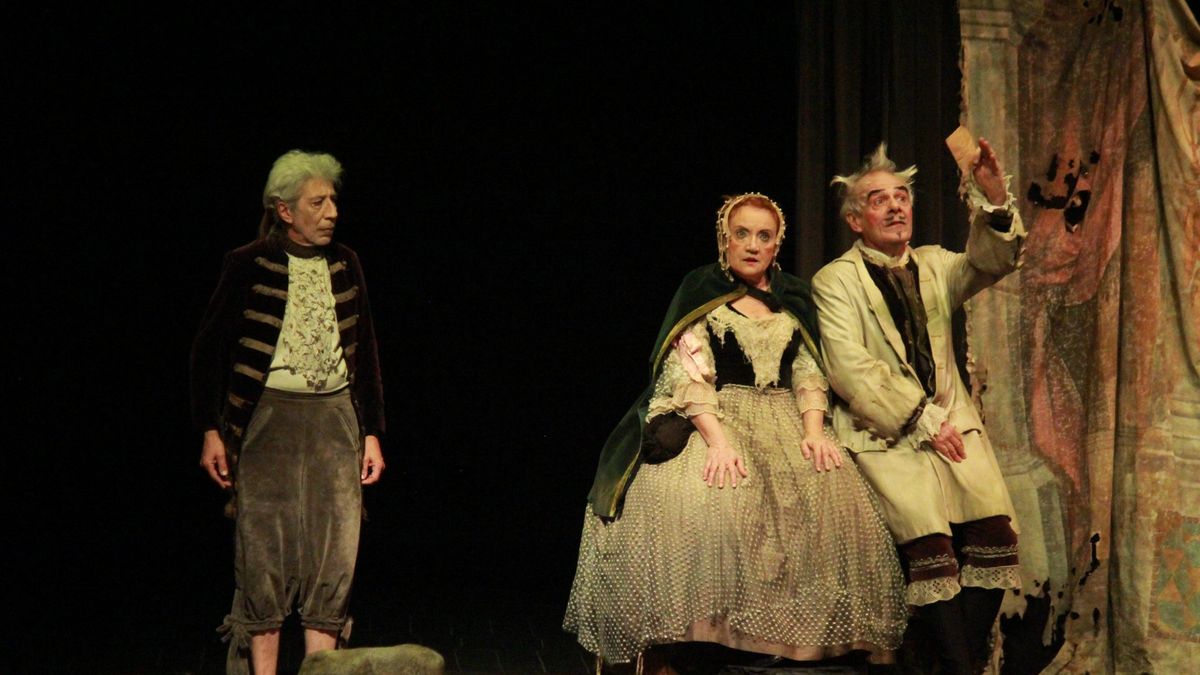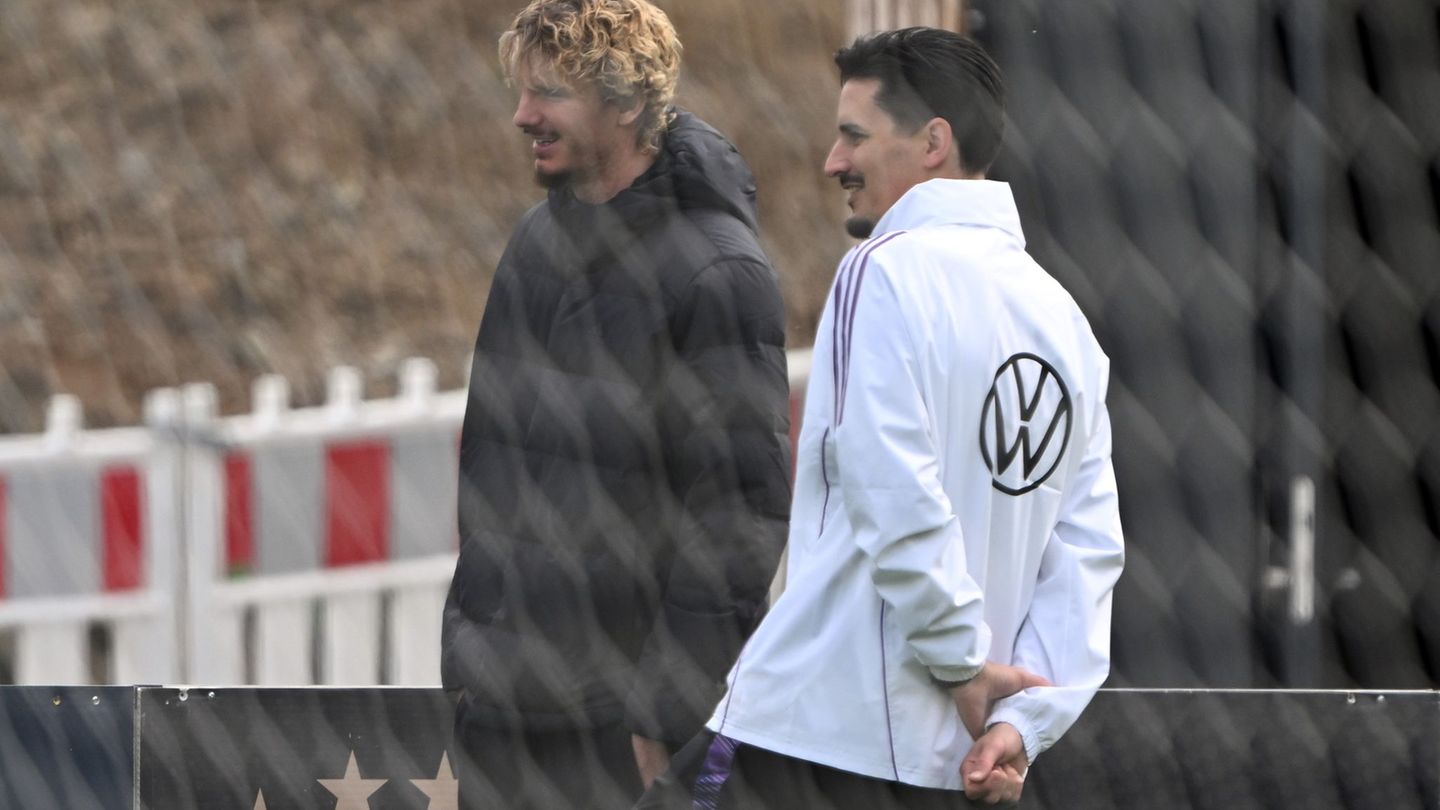“A good part of our audience is repeating. They have seen it three, four times. What movie have you seen four times in a short time and paying the entrance every time? The public is repeated because the great attraction is in those actions, which guarantee that each new function will be a new experience,” says Mauricio Kartun, Author and director of “The comic vision”, That he returns tomorrow in his sixth season. The work close to 300 functions can be seen on Saturdays at 19.30 from tomorrow in the Solidarity Room of the Cultural Center of Cooperation.
With the notable actions of Horacio Roca, Luis Campos, Cutuli and Stella Galazzi, The work will represent Argentina at the Ibero -American Festival of the Golden Age in the Community of Madrid. We talked with Kartun.
Journalist: The work is a parable about artists, whether they depend on subsidies to exist or as militants. What can we say about the current context?
Mauricio Kartun: The eternal eternal risk of the artist: to approach power and shelter to his heat, even knowing that at some point he burns you. What all artists are clear is that to power, of any sign and color, what in the background serves as a artist is to have it in dependent role: stirring their flags or burning those of the adversary. It depends on the dignity of each creator to maintain their autonomy. But this of course does not mean that like any other citizen adhered to the ideas of the ruling party. The paradox is that in culture (as in health, or education), the State- with its spaces, and its contributions- is always in the middle. Sometimes it is equanimous and you can work freely, in others, as now, it is enough that you dispense publicly so that they throw you into the jugular.
Q.: Located in colonial Buenos Aires, what thematic axes did you seek to address? What is first? The germ with the idea, the story, the characters, the themes? How is this dramaturgical construction?
MK: The work was born from an invitation from the Cultural Center of Spain in Buenos Aires to write based on one of the exemplary novels of Cervantes. I took the colloquium of the dogs and linked me immediately with some images that I had collected many years ago about a Spanish theater company stranded in La Pampa during the colony. That project did not prosper but the images do. I started playing with that and this came out. I never propose a priori thematic axes. I let the material in their narrative evolution find them. And once identified, there, I am faithful to them. It sometimes happens that in the drift these axes do not appear, or that they are not very interesting. Those are the processes that I abandon. And I have several dozen in the failures folder. This was almost entry: the collaborative artist, who delivers his aesthetic dignity in exchange for prebendas.
Q.: What do you attribute the success of this work that goes for its sixth season in a protected area such as the CCC?
MK: The first: we refer it. We move the piece, we complement with tours, we do a daily post production work to keep us. We are honorable cooperative, and we work as such, cooperating. Mutual and collectivists. Without a good box office there is no way to hold on the poster. However: there is something intrinsic to the show that creates the energy of your survival: the quality and intensity of your acting works.
Q.: How did the work resignified and grew during these years?
MK: The shows change and grow in the body of their interpreters. That is a plus of interest that add to the works the successive seasons. But more change when they are received successively in different contexts. And in this of generating different contexts, let’s agree, Argentines are unsurpassed. It is curious to see how some texts of the work that seemed to go unnoticed suddenly now very celebrated; Because in that miracle of the multivoccus that metaphors have, they resonate against the reality of one day to another in a new sense.
Q.: It is especially enjoyable for the artistic and theatrical community but obviously the pubic supports and does not become inbreeding. There is not only parody of the exercise of acting but farce and a clear tribute to the Spanish Golden Age. What can you reflect on it?
MK: The work speaks of the artist who, as long as it appears at the service of the power on duty, and that is a phenomenon that sometimes perceives the viewer than the artistic medium itself. That controversial place of the artist who is attacked from the government, or that he commits and attacks even if he knows that he is professionally harmed, that is seen by the public daily in the media and in the networks. The context of the show is that of the theatrical world, but the text is read clearer outside of it. Regarding the tribute you mention, we have had a very great joy and pride this year: we were invited as representatives of our country to the Ibero -American Festival of the Golden Age of the Community of Madrid. We will travel in June and have excited.
Source: Ambito
I am an author and journalist who has worked in the entertainment industry for over a decade. I currently work as a news editor at a major news website, and my focus is on covering the latest trends in entertainment. I also write occasional pieces for other outlets, and have authored two books about the entertainment industry.




